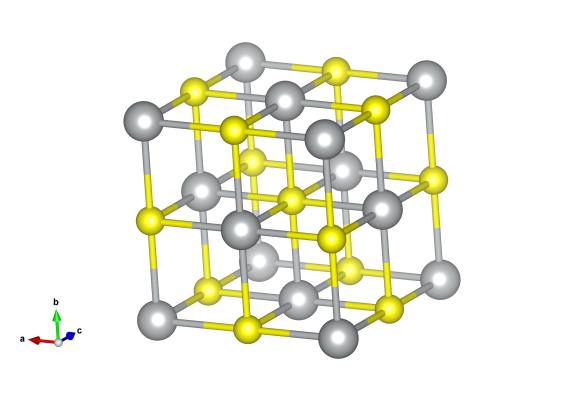A World Cup inspired post – Argentite
This is probably not a great sign for the Argentinian hopes later today … but Argentite is not really a proper mineral. And also, like germanite, has a connection to galena….
What does it look like?

Image generated by the VESTA (Visualisation for Electronic and STructural Analysis) software http://jp-minerals.org/vesta/en/
What is it?
Argentina actually has quite a scientifically derived name. From the Latin Argentum meaning silver, it's a truncation of Tierra Argentina or 'The silvery land'. Argentite is made up of silver and sulfur, AgS, and is thought to have the same crystal structure as galena. It is a high-temperature form of the mineral acanthite, and only forms at temperatures greater than about 170°C.
The confusion all stems from the fact that when acanthite (which is a monoclinic structure, which forms oblong crystals) is heated up it transforms to argentite and forms cubic-shaped crystals (which reflects the cubic structure of argentite). However, when it cools down, the structure of the material goes back to being acanthite – but the crystals retain their cubic shape, hence it was thought it was a different mineral.
Where did the structure come from?
So … we looked and we couldn’t find a paper describing the crystal structure of Argentite. We've assumed (rightly or wrongly) that it's pretty similar to galena, so have swapped out the lead atoms for silver atoms in the picture! The crystal structure for the room-temperature polymorph, acanthite, is #9011414 in the Crystallography Open Database (and rather appropriately was determined from a mineral sample picked up in . Germany!)






